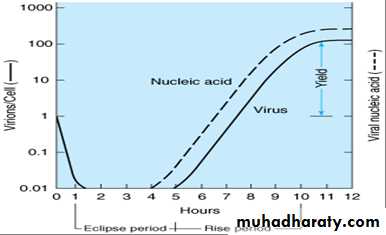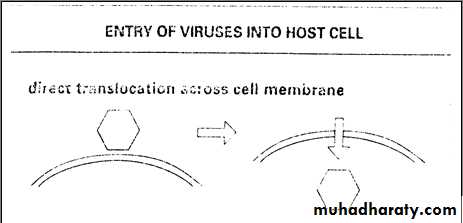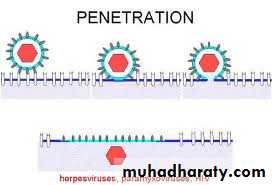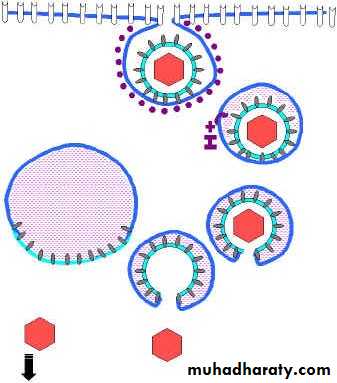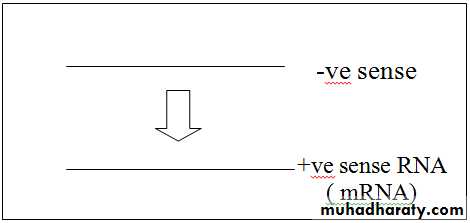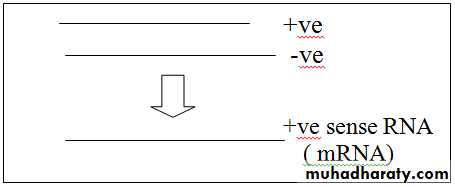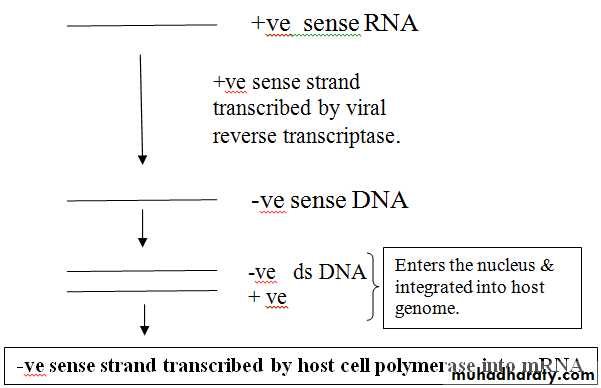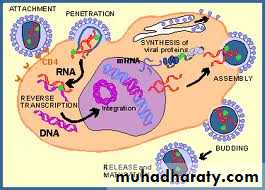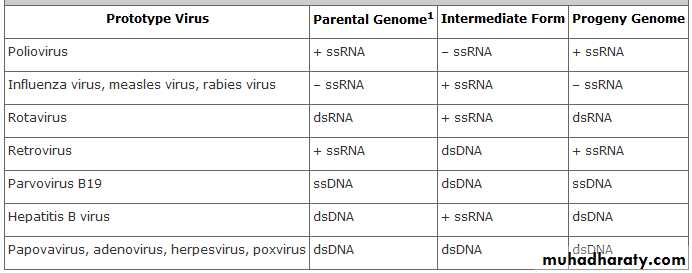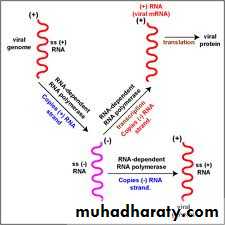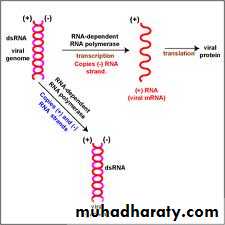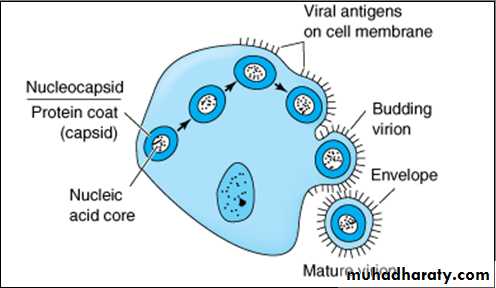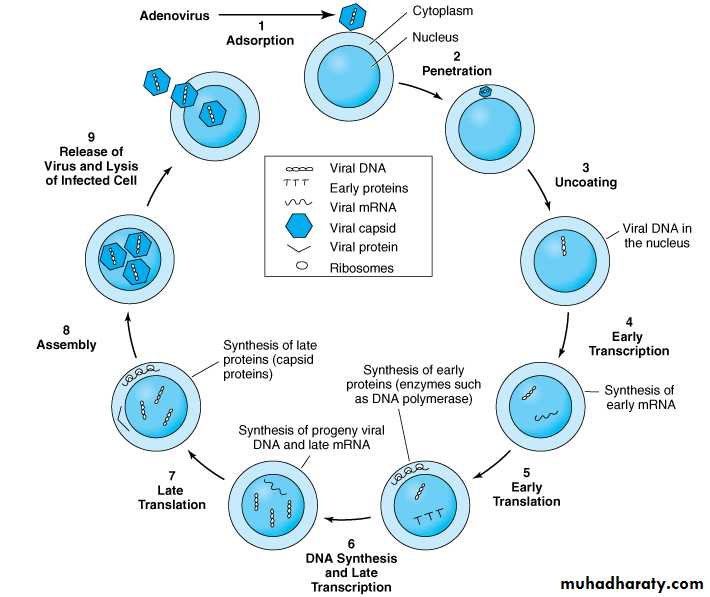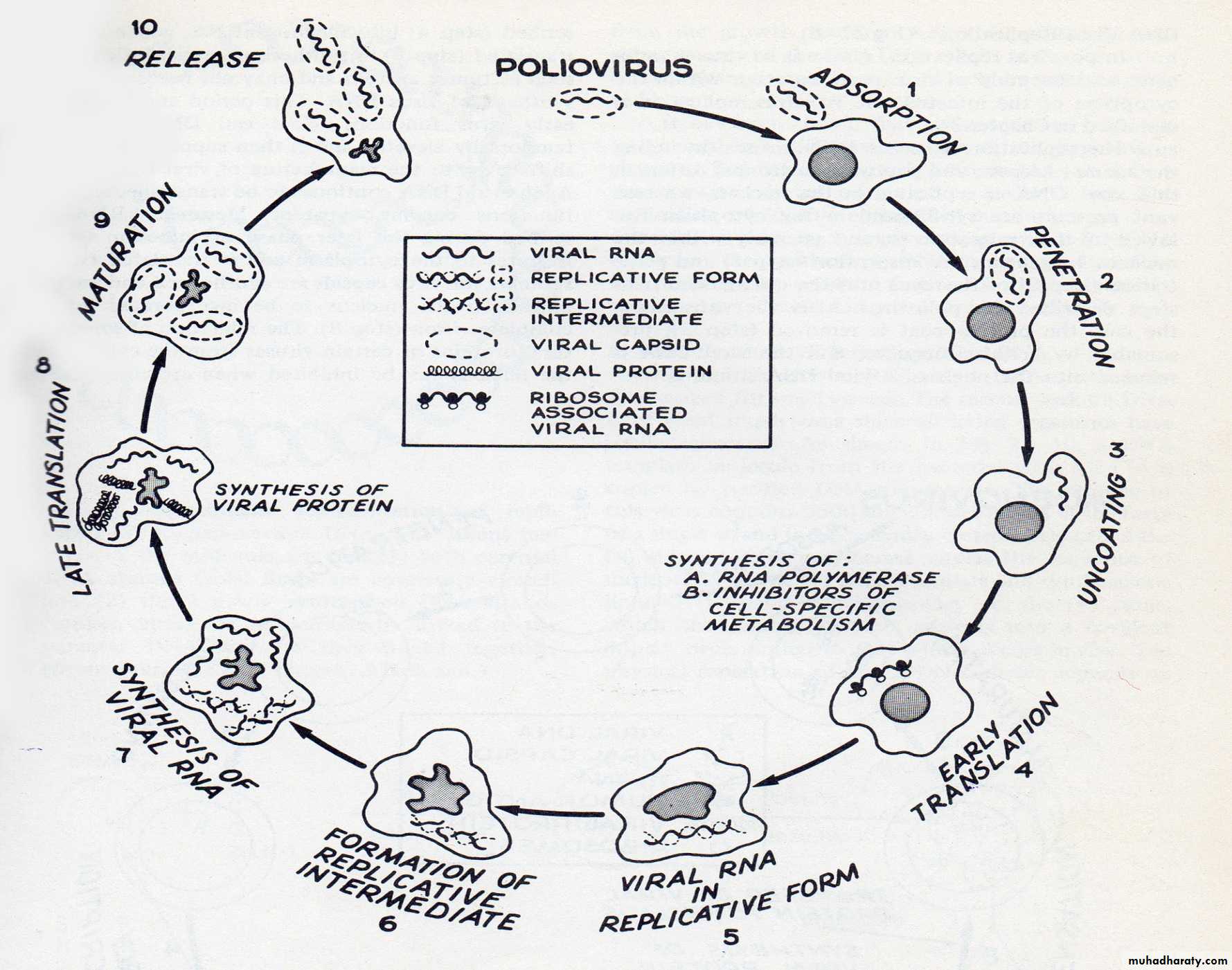Replication of viruses An overview
1-Describe the viral growth curve.
2-List the specific events during the growth cycle.3-Discuss the atypical virus-like agents.
4-Define prions as the cause of certain slow diseases.
Objectives:
The viral replication cycle is described below in two different ways:
1- Growth curve, which shows the amount of virus produced at different times after infection.
2- Stepwise description of the specific events within the cell during virus growth:
Attachment, penetration, and uncoating:1.Attachment.
2.Penetration.
Fusion of viral and cell membranes
3. Uncoating.Uptake into phagosomes
Gene expression and genome replication: Early viral mRNA synthesis (transcription)A. DNA viruses:
Replicate in the nucleus and use the host cell DNA-dependent RNA polymerase to synthesize their mRNA, except poxviruses replicate in the cytoplasm.
B. RNA viruses:
• 1- Single- stranded RNA of positive polarity.
• These viruses use their RNA genome directly as mRNA (e.g. Poliovirus).
• 2- Single- stranded RNA of negative polarity.
An mRNA must be transcribed by using the negative strand as a template. The virus carries its own RNA- dependent RNA polymerase (e.g. Influenza virus).
3-Double- stranded RNA:
The virus carries its own polymerase for transcribing into mRNA (e.g. Reovirus).•
4.Single- stranded RNA of positive polarity : (E.G. Retroviruses).
Early viral proteins synthesis (Translation):
Once the viral mRNA of either DNA or RNA viruses is synthesized, it is translated by host cell ribosomes into viral proteins. Some of which are early proteins, i.e. enzymes required for replication of viral genome, and others of which are late proteins, i.e. structural proteins of the progeny viruses.• Early proteins: occurring before the replication of the genome.
• Late proteins: occurring after genome replication.
Replication of viral genome (complementarity):
• Late viral mRNA synthesis (transcription)
• Late viral proteins synthesis (translation):Capsid proteins
Assembly and release:
• The progeny particles are assembled by packaging the viral nucleic acid within the capsid proteins.• Virus particles are released from the cell by either of two processes:
1-Rupture of the cell membrane and release of the mature particles (unenveloped viruses).
2-Budding through the outer cell membrane (enveloped viruses).
•
The Growth cycle DNA virus
The growth cycle of RNA virus
Atypical virus- like agents:• Defective viruses are composed of viral nucleic acid and proteins. Viruses usually have a mutation or a deletion of part of their genetic material.
• Pseudovirions: contain host cell DNA instead of viral DNA within the capsid.
• Viroids: Consist solely of a single molecule of circular RNA without a protein coat or envelope.
• Prions: are infectious particles that are composed solely of protein. No detectable nucleic acid.
They are implicated as the cause of certain “slow” diseases called transmissible spongiform encephalopathies
- Creutzfeldt-Jakob disease in humans.
- Scrapie in sheep
• Prion proteins are encoded by a cellular gene. When these proteins are in normal configuration, they are non pathogenic, but when their configuration changes, they aggregate into filaments, which disrupts neuronal function and results in the symptoms of disease.
• Prions are highly resistant to inactivation by UV light, heat, they are remarkably resistant to formaldehyde and nucleases. They are inactivated by hypochlorite, NaOH, and autoclaving.
• Bovine spongiform encephalopathy
“Mad cow” disease. Cattle eating brains obtained from sheep infected with scrapie prions.
Summary
1- In viral growth curve the time when no virus particles are detected within the infected cell is known as the eclipse period.
2-Early events in viral growth cycle is attachment , penetration and uncoating.
3-Middle events .A - Gene expression is mRNA synthesis depending on nature of their nucleic acid and the part of the cell in which they replicate. B-Translation of viral mRNA by host cell ribosomes into viral proteins. C-Genome replication.
4-Late events. Assembly and release.
5-There are four exceptions to the typical virus, defective viruses ,pseudovirions ,viroids ,and prions.
6-Prions are infectious particles composed entirely of protein . They have no DNA or RNA. Prions are highly resistant to inactivation by UV light ,heat , and other inactivating agents

